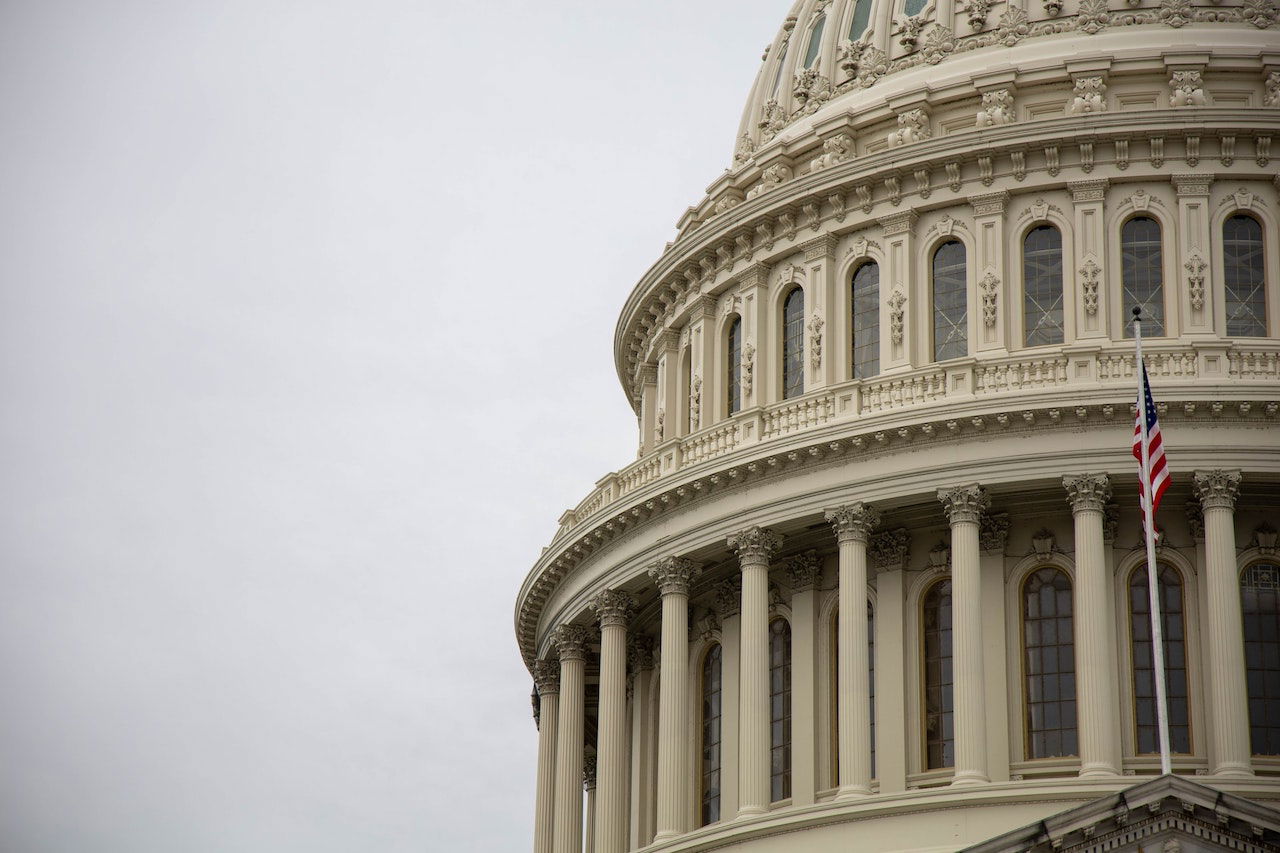Highlights
- More than 80% of American parents are looking for help from policymakers in curbing the power of Big Tech in their kids’ lives. Post This
- Public policy is critical in this battle with Big Tech. But there is a lot that we as parents can and should be doing to take control of our children’s time online. Post This
- Parents are the first and most important line of defense in the battle against Big Tech for our children’s hearts, minds, and health. Post This
“We want our children back.”
That was actress Kate Winslet’s tearful plea during her recent acceptance speech at the British Academy of Film and Television Arts awards show, where she won a prize for her portrayal of a distraught mother in “I Am Ruth,” a U.K. drama about a severely depressed teenage girl’s struggle with social media addiction.
Winslet used the opportunity to spotlight social media harms and urge U.K. lawmakers to pass pending legislation to better protect children online. She said the TV drama is “for families who feel they are held hostage by the perils of the online world, for parents who wish they could still communicate with their teenagers but who no longer can, and for young people who are addicted to social media and its darker sides.”
She also issued a call for action, saying “To people in power and who make change, please criminalize harmful content, please eradicate harmful content. … We don’t want it. We want our children back; we don’t want to lie awake terrified for children’s mental health.”
Winslet is one of many celebrities giving a voice to concerns about the dangers of social media and smartphones — concerns that are shared by an overwhelming majority of parents. Parents have an intuitive appreciation for what the research is showing — namely, that high-tech use is linked to markedly higher rates of loneliness, depression, and sleep deprivation among teens, as a Wheatley Institute report noted. This helps explains why more than 80% of American parents are looking for help from policymakers in curbing the power of Big Tech in their kids’ lives, according to a recent Institute for Family Studies and Ethics and Public Policy Center report.
Thankfully, these concerns are finally being heard by federal and state policymakers in the United States. At the federal level, U.S. Surgeon General Vivek H. Murthy released a new advisory this week calling on Big Tech to enforce their own minimum age requirements and purge harmful content from their platforms.
Moreover, at least three bills have been introduced in Congress to give parents more power to superintend social media in their children’s lives. Additionally, a growing number of states, including Utah and Virginia, have enacted age-verification laws for porn sites and other laws designed to empower parents.
Public policy is critical in this battle with Big Tech. But as we await more action from the government, there is a lot that we as parents can and should be doing to take control of our children’s time online. And the good news is that there are a variety of affordable tools to help us do that — more tools, in fact, than ever before, including new features from social media companies who are feeling the pressure from parents, experts and lawmakers to make changes to protect children on their platforms. Here we outline a few of these tools, along with steps parents can take to limit their teens’ exposure to screens.
Delay as long as possible
Many experts now agree that kids should not get a smartphone until at least high school. It is easier than ever to delay because there are a variety of non-internet phones, such as Gabb and the Light phone, available for tweens who want to be connected to their friends and family but are too young for a standard smartphone.
We both have daughters who started with Gabb phones. What’s great about the Gabb phone is that it looks like a smartphone and allows kids to text their friends, but doesn’t allow them to access the internet, including social media sites. The Gabb phone also offers parental control tools, a child lock, and an app that helps parents monitor text messages.
Delaying a smartphone also helps parents delay social media longer, at least on the child’s phone. And given the harms of social media, especially for young teens, limiting your young teens (10-14) to a simple phone is a smart move.
Limit and monitor
When your older teen is ready for a smartphone, the good news is that you do not have to hand the phone over and hope for the best. There are a variety of tools that parents can use to limit their children’s time online, monitor their phone and oversee their use of social media.
Alysse’s daughter got her first smartphone at age 16, and her parents immediately installed Bark, an internet filtering and monitoring app that alerts parents to problematic photos, text messages and websites, and helps them manage a child’s time on the device and on various apps. In addition to preventing the downloading of nonparental-approved apps, Bark also monitors teens’ use of social media and music apps, such as Instagram and Spotify, and gives parents an alert on their phones if there is a concern. For example, Alysse will receive an alert if her daughter receives a sexually explicit text message, along with suggestions from Bark on how to discuss such a text with her daughter.
Bark also recently launched a new phone that contains all the tools that come with the Bark app built into the phone. It can work as a basic phone (like the Gabb phone) and then be upgraded later to allow limited, parental-controlled smartphone use when a teen is ready.
Another great tool is Google Family Link, which is free with a Gmail address. Family Link allows parents to block or limit apps, set limits on phone time and block certain websites, as well as track a child’s phone via GPS. (Parent tip: Adjust your child’s birth date if you plan to use the tool after they turn 13).
Both Bark and Google Family Link ended up being a lifesaver for one of Alysse’s family members. Bark alerted the mom to suicidal text messages her son was sending to a friend late one night, and she was able to use Google’s tracking services to find her son before he could do himself any harm.
Use built-in controls
Finally, parents who have allowed their teens to use social media sites should also be taking advantage of the new parental-control tools offered by many of these platforms, including SnapChat and Instagram. While we do not recommend relying solely on these built-in controls, they can provide a good backup tool, and from our experience, they go over better with teens.
Instagram’s parental supervision tools, for instance, enable parents to monitor whom their teen is following and who follows them, and (more importantly) to set daily time limits, ranging from 15 minutes to two hours. Parents can also institute scheduled daily breaks from the app — all through the parent’s Instagram account. For Alysse’s daughter, that means the app won’t work between the hours of 8 a.m. and 3 p.m. during the school week, and she gets one hour a day of Instagram time. When she exceeds the time limit, Instagram shuts off and says “come back tomorrow.”
Parents should also have access to their children’s passwords for their smartphones and social media apps so they can check in on their teens’ virtual world and make sure they are not getting into trouble online.
In a pivotal scene from “I Am Ruth,” Winslet’s character, worried about her daughter’s escalating depression, discovers the teen’s smartphone in the bathroom. She hesitates a second before picking it up to scroll through some of the messages on her social media page (you get the sense this is the first time she’s done this). What she finds there shocks her.
Panicked, the mother tells her teenage son about the “terrible things people are saying about” his sister online, but he chastises her for violating his sister’s privacy. Suddenly, her daughter rushes in, tears streaming down her face, shouting, along with her brother, for her mom to give the phone back. But Winslet finally finds the courage to do what she should have done earlier: “I don’t think you should have that phone,” she says firmly. “Thisis what is making you ill.”
For the rest of us, things do not need to reach a crisis point where our teen is severely depressed, addicted to social media, dealing with an eating disorder, or suicidal due to unfiltered and unmonitored smartphone and social media use. Parents are the first and most important line of defense in the battle against Big Tech for our children’s hearts, minds, and health. We need to be looking at our child’s phone regularly, monitoring its use, controlling the flow of information that is flowing through it and getting in between our child and harmful online content. Most importantly, we do not need to wait for the government to limit our teens’ exposure to social media.
Until Congress moves on key legislation like the ‘‘Protecting Kids on Social Media Act,’’we can take steps in the best interest of our children by delaying the smartphone and any social media until at least high school, taking advantage of non-internet forms of communication for the tween years, and using the countless tools available to help us limit, monitor and filter our teen’s time online once they acquire a smartphone.
Alysse ElHage is editor of the Institute for Family Studies blog and a freelance writer. Brad Wilcox is senior fellow at the Institute for Family Studies and director of the National Marriage Project at the University of Virginia.
Editor's Note: This article was originally published at Deseret News. It has been reprinted here with permission.














